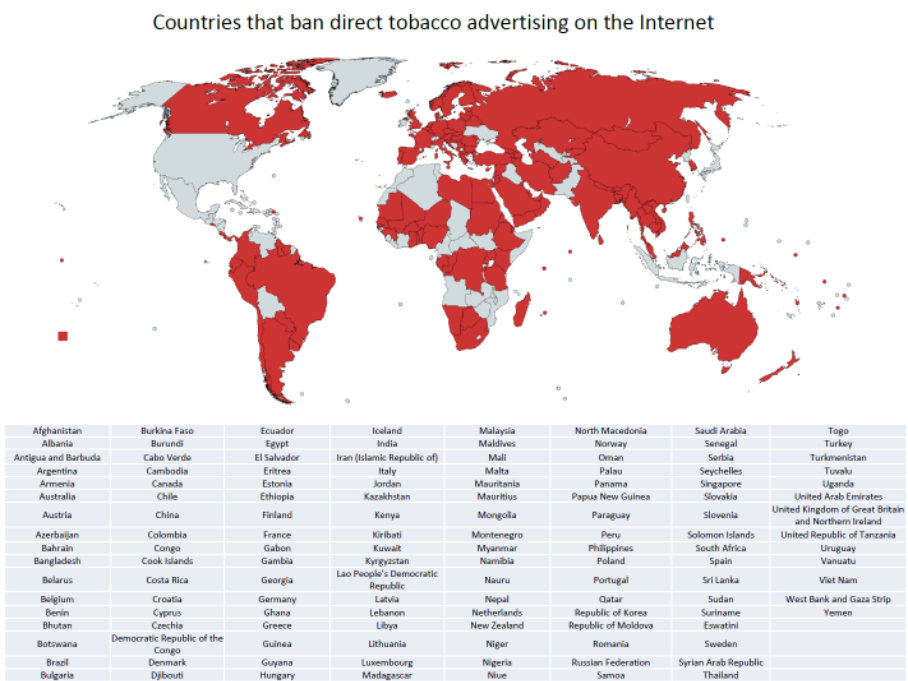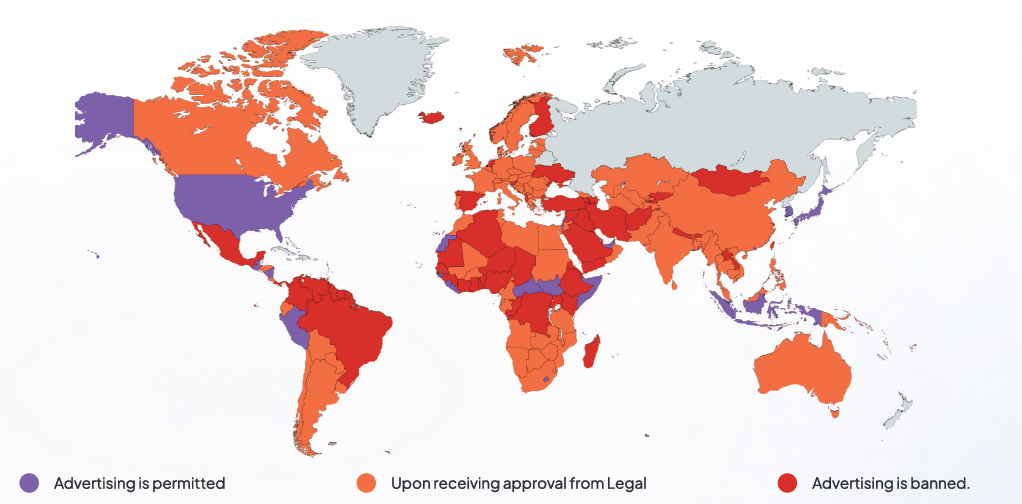Tobacco and Alcohol guidelines
Tobacco
Guidance for tobacco advertising
Tobacco advertising is subject to strict and varying regulations across different countries.
Tobacco advertising is subject to strict and varied regulations across different countries. Most countries worldwidearound the world have implementedbanned bansall on tobacco advertising, significantly influenced by the World Health Organization (WHO) Framework Convention on Tobacco Control (FCTC), adopted in 2003. This treaty plays a vital role in global tobacco control efforts, aiming to reduce tobacco use through various strategies. One of the most impactful strategies is the prohibitionforms of tobacco advertising, promotion,both direct and sponsorship.indirect. TheseAs the regulatory landscape continues to evolve, even minor violations can result in severe legal penalties, financial loss, or reputational damage.
It is essential to assess the legal environment of each market before launching any tobacco-related advertising banscampaigns.
The aremap essentialprovided forbelow protectingoffers publica healthhigh-level andoverview reducingof the appeallegal status of tobacco products,advertising particularlyin amongdifferent youngcountries. people.However, Continuedfinal supportdecisions must always be based on up-to-date legal consultation to ensure full compliance with local laws and regulations.
The map uses the following color coding to reflect legal conditions for FCTC initiatives is crucial in our efforts to promote a healthier, smoke-free future. From July 11, 2023, a new set of measures to protect the population from tobacco and ENDS came into effect: The ban on advertising of HTP devices, e-cigarettes, and e-liquids e-cigarette, e-liquid content, requirements in accordance with Directive 2014/40/EU. It is no longer legal to advertise the devices in any form, closing the loophole that may have existed before. It also include Ukraine ads:
 |
||||||||
Alcohol
ManyProduct countriesclassification aroundnotes:
Vapes, theIQOS, worldPloom, haveand recognizedother theHeated needTobacco toProducts restrict(HTPs): alcoholThese advertisingare classified as a crucial public health measure. Similar to tobacco control efforts, these restrictions aim to mitigate the negative effects of alcohol consumption on society. The push for alcohol advertising bans stems from growing evidence that exposure to alcohol marketing significantly influences drinking behavior, particularly among youth. By limiting the visibility of alcohol promotions, governments can reduce the likelihood of underage drinkingproducts, and encourageall healthier consumption patterns among adults. Implementingtobacco advertising restrictions isapply essentialequally forto promoting responsible drinking and reducing alcohol-related harms, suchthem as addiction,to accidents,traditional and health issues. Ongoing support for these initiatives is vital in creating a safer, healthier environment for all.cigarettes.
AdvertisersOral can’tTobacco runProducts alcohol(e.g., adsSnus):
While Snus advertising is more flexible and widely accepted in theSweden, followingit countriesis banned or regions:highly restricted in most other countries.
All tobacco advertisements must receive legal approval before launching any campaign. Approval is valid only for the specific country that was reviewed.
Link to article

